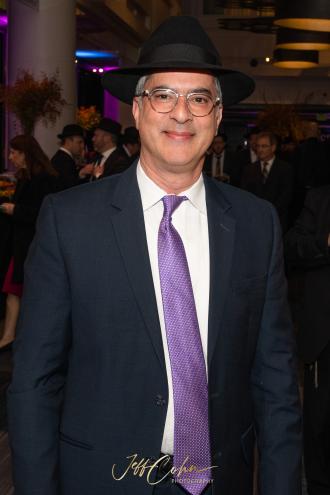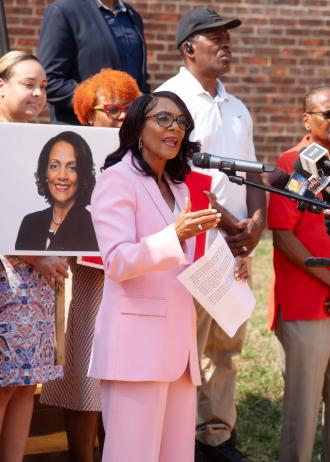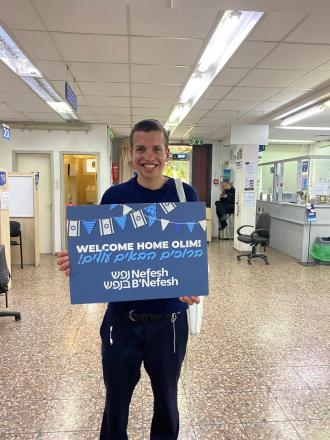To us, the age of 98 might seem a bit old to begin a new job – that is, unless that new job is the spiritual leadership of Klal Yisroel, a position which was held by Maran Hagaon HaRav Aharon Yehuda Leib Shteinman ZATZAL of Bnei-Brak until he was Niftar a short while ago at the age of 104.
Even before the passing of Maran Rav Yosef Shalom Elyashiv ZATZAL, who was widely recognized as the leader of the Torah world, Rav Elyashiv’s son-in-law, Hagaon Rav Chaim Kanievsky Shlita, penned a letter affirming the status of Rav Shteinman, his mechutan, as the leader of the generation:
The leadership of the generation is hereby given to Maran Ge’on Yisrael Hagaon Rav Aharon Yehuda Leib Shteinman shlit”a, all of whose actions are for the sake of Heaven…
It is thus obligatory upon all to obey every word that leaves the mouth of Maran shlit”a, through which we fulfill the affirmative command, “Ve’asisa kechol asher yorucha” (“You shall do in accordance with all that they instruct you”)…
Already half-a-year earlier, when Rav Elyashiv zt”l was hospitalized for what would be the final time before his petirah, Rav Shteinman was recognized as his successor to the throne of Torah leadership. And in what was considered by many as his unofficial “coronation,” Rav Shteinman appeared before the tens of thousands of attendees at Dirshu’s Siyum HaShas that summer at Tel-Aviv’s Nokia Arena to address the crowd and read the final lines of Shas.
The Rosh Yeshiva walked up to the podium to the raucous singing of “Yamim al yemei melech tosif,” amid a feverish aura of drama and excitement borne out of the realization that the new official leader of the Torah world was making his first public appearance in that capacity. In his address to the crowd, Rav Shteinman proclaimed, “We live in order to fulfill mitzvos. HKB”H will help us so that we are all privileged to reach the level where the entire purpose of our lives is to fulfill mitzvos and learn Torah.”
From Brisk to Bnei Brak
Rav Shteinman was born in 1914 (some reports claim 13, but 14 is the official listed date) in the town of Brisk, (also known as Brest, part of modern-day Belarus) where he was raised and reportedly enjoyed a close relationship with the Brisker Rov, Rav Yitzchak Zev Soloveitchik ZATZAL.
In 1937, during World War II, Rav Shteinman was forced to flee Brisk as he was in danger of being drafted to the Polish army which then controlled the town. Together with his close friend Rav Moshe Soloveitchik ZATZAL he journeyed westward to Montreux, Switzerland, where he joined in Yeshivas Etz Chaim.
It was there that in 1943 he married his wife, Tamar Kornfeld A”H, a daughter of Gerrer chossid, Rav Shammai Shraga Kornfeld of Antwerp, who had fled to Switzerland from Belgium. Rebbetzin Shteinman was a descendant of several illustrious Torah figures, including the Magen Avraham, Rav Yehonasan Eibshitz and the Chiddushei HaRim. She passed away in 2002.
Both of Rav Shteinman’s parents, and all five brothers, were killed during the Holocaust.
During his years in Switzerland, Rav Shteinman served as a Ra”m in Yeshivas Heichal Eliyahu in Montreux.
He moved to Eretz Yisrael in 1946 and originally settled in Petach Tikva. Soon thereafter, he was recommended by the Chazon Ish ZATZAL for the position of Rosh Yeshiva of Yeshivas Chofetz Chaim in Kfar-Saba. He eventually moved to Bnei Brak, where he lived until his petirah. In 1955 he was appointed Rosh Yeshiva of Ponevezh La’tze’irim, (high-school) and in 1964 was appointed Rosh Kollel at Ponevezh. He would eventually found his own yeshiva, Yeshivas Geon Yaakov in Bnei Brak, which he continued to lead until his final day.
Rav Shteinman has two sons and two daughters. One of his sons, Rav Shraga Noach, is married to the daughter of Rav Chaim Kanievsky shlit”a.
His daughter Rebbitzen Rochel Devorah Berlin was Niftar on 4 Kislev 5778.
Paragon of Simplicity
Rav Shteinman’s home and lifestyle were extraordinarily simple and austere. Around 5 years ago, a journalist for the Israeli daily Israel Hayom, Yehuda Shlezinger, visited Rav Shteinman’s 3.5-room apartment on 5 Chazon Ish St. in Bnei-Brak, and marveled at the humble conditions, describing dilapidated closets and cabinets, and walls with peeling paint.
Similar impressions were expressed six years ago by the Israeli Ambassador to Japan, Nissim Ben Shitrit, who visited Rav Shteinman together with then Bnei-Brak mayor Rabbi Yaakov Asher to discuss the efforts made on behalf of the two yeshiva students who had been imprisoned in Japan. The Ambassador noted his astonishment over the tiny residence occupied by one of the leading sages of Israel, saying, “I have never seen anything like it in my life.”
For decades, Rav Shteinman slept on the plank-bed he received from the Jewish Agency when he moved to Israel. It was only recently when, due to his advanced age and frailty, the bed was replaced by a hospital bed. Rav Shteinman learned on a stool which he had elevated so that his feet would not reach the floor, thus reducing the chances of falling asleep during learning. The family received many offers to purchase the home for a handsome price, as well as donations of more comfortable and aesthetic furniture, but Rav Shteinman refused, insisting that he has what he needed and seeks no more.
This remarkable level of simplicity served as an inspiration to many. One of the rav’s gabbaim told Israel Hayom of a couple that came to consult with Rav Shteinman regarding their marriage. They were embroiled in bitter conflict over the issue of whether or not to invest in house renovations. While waiting to meet Rav Shteinman, the wife took one look at Rav Shteinman’s kitchen and immediately cancelled the appointment.
“If the gadol hador can live this way,” the woman said, “then so can I.”
A Marriage Built Upon Mutual Respect
Yaakov Rosenstein, who has served as Rav Shteinman’s personal assistant for the past 25 years years, described to Israel Hayom the unique aura of peace and mutual respect that characterized the relationship between Rav Shteinman and his wife, Rebbetzin Tamar Shteinman. He said that the rebbetzin took on personal responsibility for all household chores, never even sending her husband on errands, so that he could devote himself entirely to his Torah studies. The Rosh Yeshiva, in turn, treated his rebbetzin with the utmost respect, always ensuring to eat his meals with her, and making a point of calling her each day from the yeshiva. Additionally, whenever he left the house, he would personally go to the rebbetzin to bid her farewell, rather than send one of his gabbaim to relay the message.
The story is told that after Rebbetzin Shteinman’s petira, a family member noticed a change in the Rosh Yeshiva’s Friday night protocol. For years, Rav Shteinman would always request a second helping of fish at the se’uda, which he stopped doing after his wife’s passing. Even when the family members offered him a second helping, he refused. Rav Shteinman later explained that he does not even enjoy fish, but he would always ask for a second helping out of respect and appreciation for his wife, who labored to prepare fish every Erev Shabbos. It was out of his desire to give her satisfaction that he enthusiastically asked for extra fish each week for 60 years.
A Porch Full of Kvitlech
Even at 103 year old, Rav Shteinman was an address for Jews around the world, from government officials to Roshei Yeshiva to avreichim to simple balabatim, who flocked to the great sage for guidance. The door to his home was open to visitors, and throngs of people came to seek his blessing, encouragement and advice. Dignitaries seeking to meet with Rav Shteinman generally entered through the porch window to avoid the large crowds, and important Israeli officials such as Eli Yishai and Ehud Barak have been seen skipping into the sage’s apartment through the window. One of the family members remarked, “It is funny to see them jumping through the window…but this is good both for the rav and for the security guards, that they come and go quietly.”
Remarkably, Rav Shteinman made time for all questions and problems that came his way, both big and small. Knesset members consulted with him for guidance on major issues that would arise in the Israeli parliament, and he met with married couples to resolve conflicts and with yeshiva bochurim and parents to discuss matters involving shidduchim.
“There is nothing that is not in the Gadol Hador’s territory, that is too trivial for him,” MK Uri Maklev of United Torah Judaism told Israel Hayom. “He has the amazing ability to absorb, analyze and probe.”
New York City Councilman David Greenfield, who regularly visited with Rav Shteinman to ask shailos regarding Greenfield’s work for the klal, told YWN that the Rav would query him on even the most minute details, “HaRav Shteinman had an incredible ability to take the most complex issues and simplify it. I remember once I was very concerned about a challenging communal issue. I sat with the Rosh Yeshiva for quite some time. He asked several probing questions down to the most localized detail of the problem. After I concluded my lengthy explanation of the issue, the Rosh Yeshiva literally came up with a resolution in less than one minute.”
Chaim Cohen, who served for many years as Rav Elyashiv’s personal assistant, told Israel Hayom that Rav Elyashiv described Rav Shteinman as “a pure Jew,” and often deferred to his authority. “Regarding every question that came to him in the last decade,” Cohen said, “he would first ask whether they had first spoken with Rav Shteinman. On weighty public matters, he always said that he [Rav Shteinman] should be consulted first – such as the decision of whom United Torah Judaism would recommend to the President to charge with forming a coalition, or for which candidate to vote for President of the State.”
During the bein hazmanim vacation in the yeshivos, many students took advantage of the break to visit Rav Shteinman and receive his guidance and blessing. The line to his apartment extended down the stairs and outside his building and some times down the block as people waited for hours to get a Bracha from the Gadol Hador.
Rav Shteinman also received hundreds of kvitlech from Jews around the world asking him to pray on their behalf. The Rosh Yeshiva refused to discard the notes, and they were kept in large heaps on the tiny porch outside his apartment.
Rav Shteinman was heavily involved in tzedakahs, working tirelessly to raise funds for needy families and worthy charitable institutions. Somebody who works closely with the Rosh Yeshiva told YWN, “He lived in poverty, does not buy and does not allow people to buy for him, but he sometimes had in his pocket thousands of dollars that he received from wealthy people abroad. He had a handwritten registry and he distributed to kollelim as he sees fit. Nobody touched the money.” Another source confirmed, “Harav Shteinman assisted in raising millions of dollars each year for kolel yungerleit. Incredibly, he knew exactly where each dollar went and made sure that not a penny was wasted.”
Once, Rav Shteinman experienced sharp pains in his arm, and the family feared that it was the result of his heart condition. As they waited for the doctor to come and examine him, Rav Shteinman’s main concern was ensuring they knew where all the charity money was. Even as he lay in pain facing the prospect of a life-threatening condition, his mind was not on his body, but on the tzedaka money that needed to get to its intended recipients.
Rav Shteinman wrote numerous sefarim, including 15 volumes of commentaries to Shas under the title Ayeles Hashachar, and a series of volumes on Chumash and Rashi under the same title. His hasmada was legendary, and even when the yeshiva world goes on its customary break for three weeks in the summer, Rav Shteinman continued his regular learning schedule. As somebody close to the Rosh Yeshiva told YWN, “For the Rosh Yeshiva there was no concept of vacation or bein hazmanim.” His mission to serve Klal Yisroel continued throughout the year, and did not allow for vacation.
Once a Talmid, Always a Talmid
It is told that one of Rav Shteinman’s gabbaim once had to visit a certain family in Jerusalem, and accidentally entered the home of a different family with the same name that lived in the neighborhood. As it turned out, the man whose home he mistakenly visited was sitting shiva for his sister. The gabbai decided to stay to fulfill the mitzva of nichum aveilim, and he discovered that the nifteres’ husband had been a student of Rav Shteinman some 50 years earlier. The husband and the gabbai spent a few minutes sharing stories of the great Rosh Yeshiva, after which the gabbai left to find the family he needed to see.
Later that day, when the gabbai returned to Bnei-Brak, he mentioned to the Rosh Yeshiva that he had met a former talmid. Rav Shteinman did not remember the name, but he immediately told his gabbai to prepare his things and bring him to the shiva home in Jerusalem.
“If a talmid of mine is sitting shiva,” he said, “then I have to go visit him.”
And so they drove to Jerusalem that very day, and Rav Shteinman sat with his talmid for 25 minutes, bringing him much-needed nechama for the passing of his wife.
This was the leader of the generation, a Torah giant for whom no person’s problem was too small or trivial, whose sense of mission and responsibility extended to all acheinu Benei Yisrael, and for whom no challenge was large enough to stand in the way of that mission.
Who will fill the place of the Gadol Hador – a Gadol who saw Gedolei Olam as they lived before the Holocaust? We can only hope that a leader as ledgendery and as great as Rav Shteinman will take his place, and lead us to Moshiach – may he come speedily in our times.
Yehi Zichro Boruch….

















